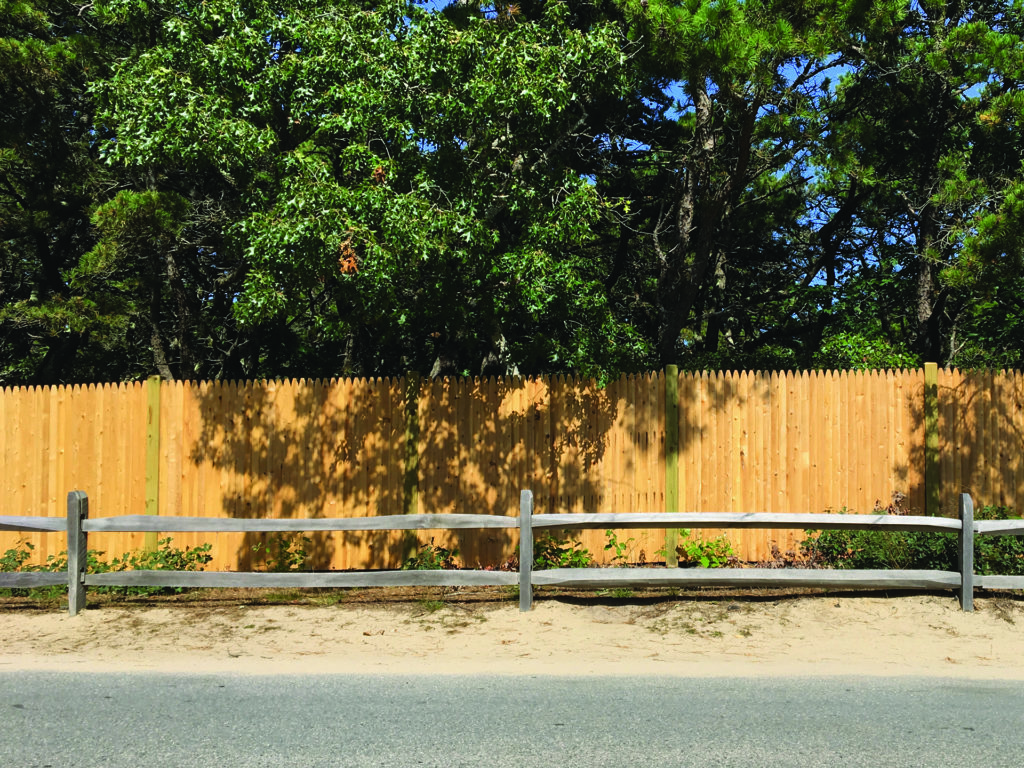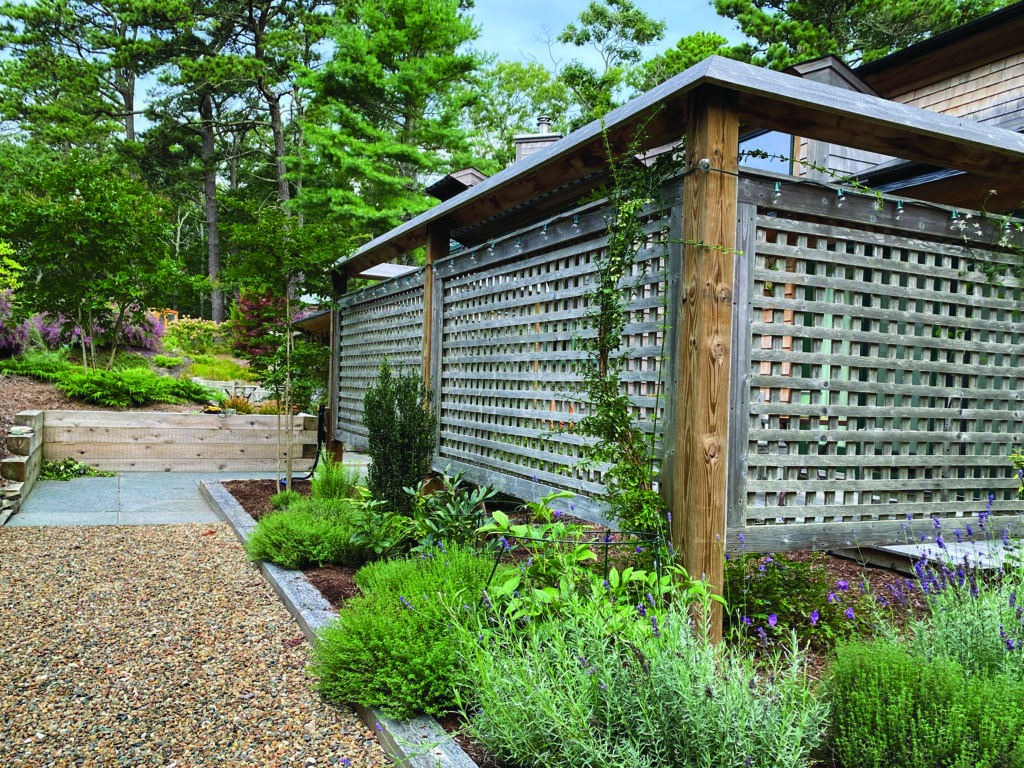All of us on the Outer Cape are in some way or another living in a national park. Even if our homes are not within its boundaries, we are surrounded by the Seashore. The maps of our everyday lives are defined by it.
Here, most people would agree with Robert Frost: “Something there is that doesn’t love a wall.” And with the poet’s unspoken comeback to his “good fences” neighbor: “But here, there are no cows.”
And so, when for whatever reason or whim fences seem necessary, their purpose, environmental impact, and effect on our experience of this peculiar shared landscape become design considerations.
Fences are not illegal in the Cape Cod National Seashore. The park itself builds some, ranging from sand fencing made of thin slats, placed to gather what grains the wind brings, to chain link meant to keep trespassers out of some of the old buildings at the Highland Center in Truro. On private land within park boundaries, the rules on setbacks and structures for the relevant town apply.
Lauren McKean, park planner at the Seashore, says the park prefers that people use wooden fencing. “Cedar and locust hold up well to insects,” she adds. “If people use chain link or other metal fencing, black coatings help them disappear more into the landscape. Breaks and variation in fence lines also make fencing less formidable.”
McKean says having a “critter gap” at the bottom of fencing is important. You want to be sure box turtles and other small animals can pass through.
An undated document in the National Park Service History Electronic Library, an unofficial treasure trove, provides advice in language that seems old-fashioned but not out of date, given the fact that we’re still surrounded by the park.
“If man could bring to his creations in natural parks, the protective coloration that Nature bestows on wildlife, with how much more harmony he would endow his trespasses!” the unnamed authors wrote.
Barriers, they go on to say, are “unavoidable necessities” when it comes to warning motorists of dangers ahead. Even these should reflect “a preponderance of the unobtrusive…. Barriers in natural parks can spread the blight of man’s destructiveness with greater speed and to greater distances than any other instrument of his devising — save perhaps matches.”







